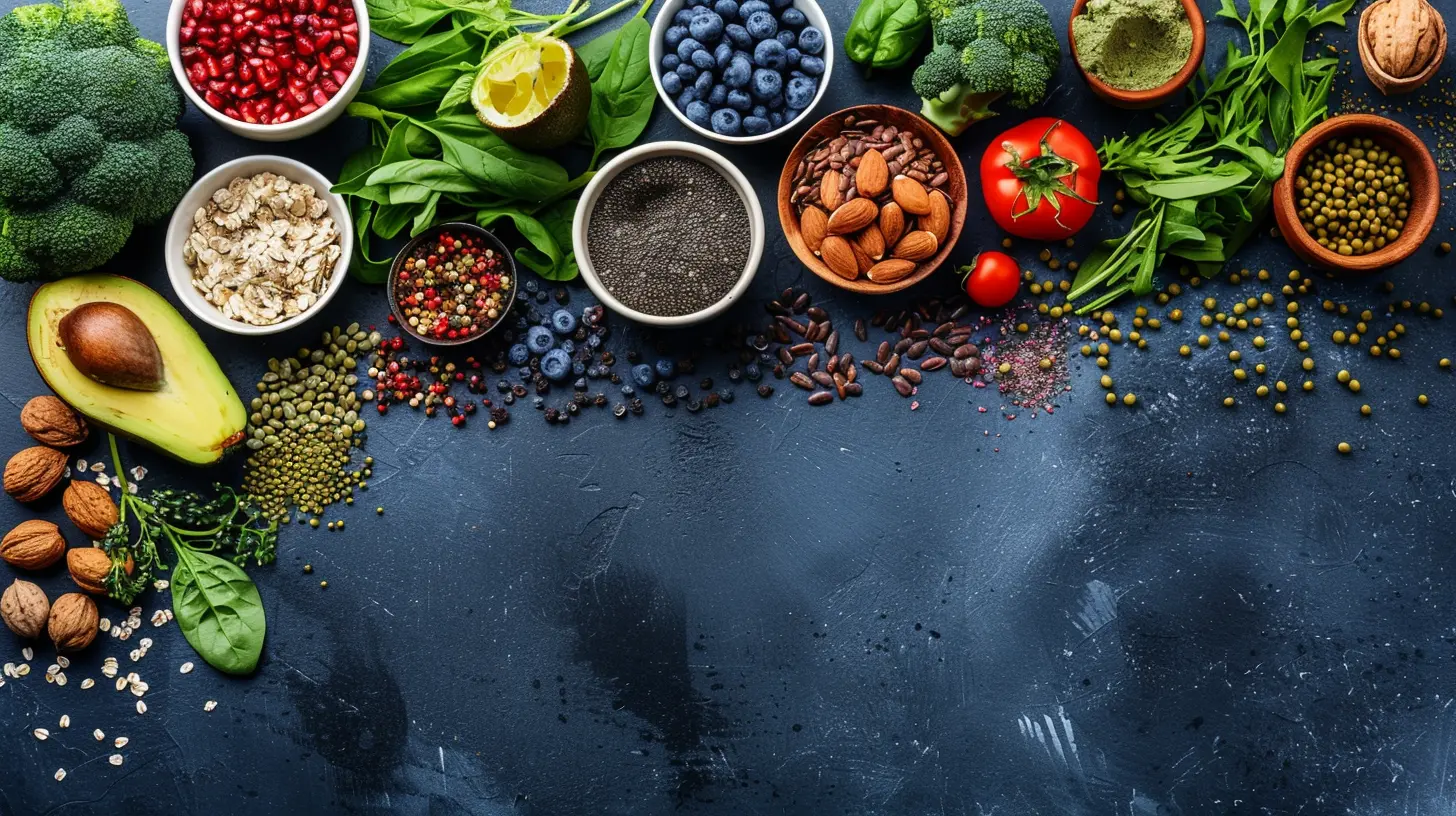Yoga and Nutrition: A Holistic Approach to Wellness
11 August 2025
In today’s go-go-go world, where health fads come and go like the seasons, two age-old practices have stood the test of time—yoga and nutrition. Separately, they offer countless benefits. But together? They’re a powerhouse duo that can completely transform your physical, mental, and emotional well-being.
Let’s be real—modern life is stressful. The pressure to juggle work, relationships, and responsibilities can take a toll. But here’s the good news: a balanced yoga practice paired with mindful eating habits isn’t just about looking good in stretchy pants or following a food trend. It’s about creating a lifestyle that supports long-term health from the inside out.
So roll out your yoga mat, grab a green smoothie (or your favorite healthy snack), and let’s dive into how yoga and nutrition make the ultimate tag team for wellness.
Why Yoga Isn’t Just Stretching
Before we dive into nutrition, it’s worth clearing something up—yoga is so much more than stretching or bending your body into pretzel shapes. It’s a full-spectrum approach to health.Yoga combines movement (asana), breath control (pranayama), and meditation (dhyana), all of which target not just physical fitness but also emotional and mental clarity. Think of yoga as mental floss for your brain and oil for your joints.
Physical Benefits
- Improves flexibility & posture: Regular practice can loosen tight muscles, especially if you sit at a desk all day.- Builds strength: It’s not all child’s pose. Poses like Plank or Chaturanga work out muscles you didn’t know you had.
- Enhances balance & coordination: Great for preventing falls as you age or just improving your athletic performance.
- Boosts immunity: Consistent practice has been linked to improved immune response.
Mental and Emotional Perks
- Reduces anxiety and depression: Mindful breathing and movement help reset your nervous system.- Improves focus & clarity: Meditation helps declutter the mind, just like closing all those browser tabs in your head.
- Encourages self-awareness: Yoga turns your attention inward so you can tune in to what your body and mind really need.

Why Nutrition Matters Just as Much
You wouldn’t put soda in a gas tank and expect your car to run smoothly, right? The same concept applies to your body. What you eat fuels your yoga practice, supports recovery, and stabilizes your mood.Nutrition isn’t about strict diets or calorie-counting. It’s about understanding what your body thrives on and making choices that align with your wellness goals.
Key Principles of Nutrition in a Yogic Lifestyle
If yoga is the art of tuning into your body, then nutrition is the science of feeding it well. Traditional yogic nutrition is often based on Ayurvedic principles, which focus on balance and harmony more than restrictions.1. Eat Sattvic Foods
Sattvic foods are pure, clean, and natural—think fruits, vegetables, whole grains, nuts, and seeds. These foods are believed to promote clarity, calmness, and focus—all things a yogi seeks.2. Favor Fresh Over Processed
The less manipulated your food is, the better. Whole foods are packed with enzymes and nutrients that help your body function at its best, especially during yoga practices that demand energy and focus.3. Listen to Your Body
Eating isn’t just an act—it’s a conversation. Your body tells you when it’s hungry, full, or reacting poorly to a certain food. Yoga sharpens your ability to listen to those signals rather than drowning them out with cravings or habits.
The Symbiotic Relationship Between Yoga and Nutrition
Let’s put this into perspective: Yoga prepares your body to absorb nutrients efficiently, while good nutrition gives you the energy and stamina to sustain your yoga practice. One without the other? You’re only running on half power.How Yoga Supports Nutrition
Yoga can actually help you make better food choices. Here’s how:- Mindful eating: Yoga boosts your awareness, making you less likely to eat out of boredom, stress, or habit.
- Improved digestion: Certain poses (like twists or forward folds) stimulate digestive organs.
- Craving control: A calm mind is less likely to reach for sugar or junk when emotions get intense.
How Nutrition Supports Yoga
Good food powers your practice. Simple as that.- Sustained energy: Complex carbs, healthy fats, and quality protein keep you fueled through long Vinyasa flows or meditations.
- Faster recovery: Nutrient-rich foods help muscles repair and reduce post-practice soreness.
- Mental clarity: Foods rich in omega-3s, antioxidants, and vitamins B and D boost brain function, perfect for staying present on your mat.
Real-Life Example: A Day in the Life of a Yoga-Fueled Diet
Let’s get practical. What does a day of eating look like when you’re living this yoga-nutrition lifestyle?Morning
- Before yoga: A warm glass of lemon water to kickstart digestion.- Post-practice breakfast: A smoothie bowl with spinach, banana, chia seeds, almond butter, and oat milk.
Midday
- Lunch: A quinoa salad loaded with roasted veggies, chickpeas, kale, and a tahini-lemon dressing.Afternoon snack
- A handful of nuts or a piece of fruit with nut butter.Dinner
- A nourishing bowl with brown rice, steamed greens, tofu, and a turmeric-ginger sauce.Evening
- Herbal tea (like chamomile or tulsi) to unwind before a light stretch or meditation.Common Pitfalls to Avoid
Let’s not pretend any of this is always sunshine and green juice. There are a few common missteps to be aware of:1. Overcomplicating It
You don’t need to be a vegan monk or memorize your doshas to eat well. Start simple: more plants, fewer processed foods.2. Rigid Diet Rules
Extreme diets often backfire. Instead of cutting carbs or counting every gram of protein, focus on how food makes you feel.3. Yoga As a Fix for Bad Habits
Don’t treat yoga like a detox-machine to erase junk food. Both yoga and mindful eating are daily practices—not quick fixes.Simple Tips to Get Started
Trying to overhaul your routine overnight is a recipe for burnout. Here’s how to ease into this holistic lifestyle:- Start with breathwork: Even five minutes of intentional breathing can calm your nervous system and curb stress eating.
- Plan ahead: Meal prepping with fresh, whole ingredients makes healthy choices easier.
- Create a routine: Consistency is key. You don’t need a two-hour practice—20 minutes daily is amazing.
- Hydrate like a yogi: Water is life. Infuse it with cucumber, mint, or lemon for a little pizzazz.
- Keep it joyful: If your wellness routine feels like a chore, it’s not sustainable. Find joy in your food and movement.
How This Duo Impacts Long-Term Wellness
Let’s zoom out for a second. What’s the big picture?Yoga and nutrition form the foundation of a long, vibrant life. Together they:
- Lower the risk of chronic diseases (heart disease, diabetes, etc.)
- Improve mental health and emotional resilience
- Boost immunity and vitality
- Enhance sleep quality
- Promote a healthy metabolism and weight balance
But more than that, they give you the tools to feel good every single day. And isn’t that what we’re all really after?
Final Thoughts: It’s Not About Perfection, It’s About Connection
Look, you don’t need to be a kale-loving contortionist to embrace a holistic approach. Wellness isn’t a destination—it’s a relationship you build with your body over time. Like any good relationship, it’s based on communication, trust, and respect.Yoga teaches you to listen. Nutrition gives you the language to respond. Together, they create a dialogue that supports your mind, body, and soul.
So take a breath, take a bite, and take a step closer to truly holistic wellness.
all images in this post were generated using AI tools
Category:
YogaAuthor:

Ruben McCloud
Discussion
rate this article
1 comments
Dulce Pruitt
Integrating yoga with nutrition fosters overall wellness and enhances athletic performance.
September 10, 2025 at 11:38 AM

Ruben McCloud
Absolutely! Integrating yoga with nutrition creates a balanced foundation for wellness, optimizing both physical performance and mental clarity.


